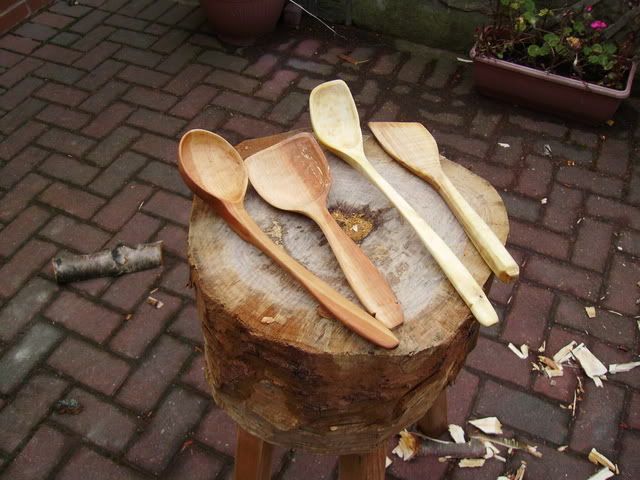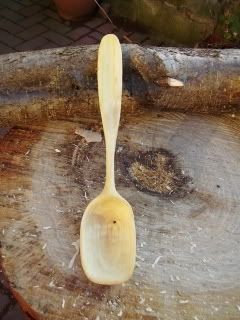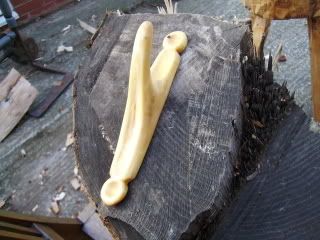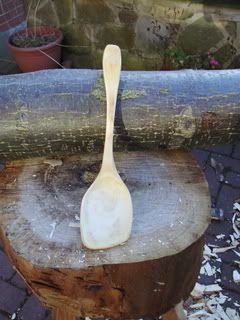These are some of my first attempts at carving. I've tried to experiment with different species of wood to gain experience.

from L-R Cherry,Alder,Birch & Sycamore

Hazel

Coat Hook made from natural Birch crook

some kind of hard Maple I think?
Unfortunately my camera isn't the best and my IT skills certainly ain't so I don't know what thses will look like
John

from L-R Cherry,Alder,Birch & Sycamore

Hazel

Coat Hook made from natural Birch crook

some kind of hard Maple I think?
Unfortunately my camera isn't the best and my IT skills certainly ain't so I don't know what thses will look like
John




